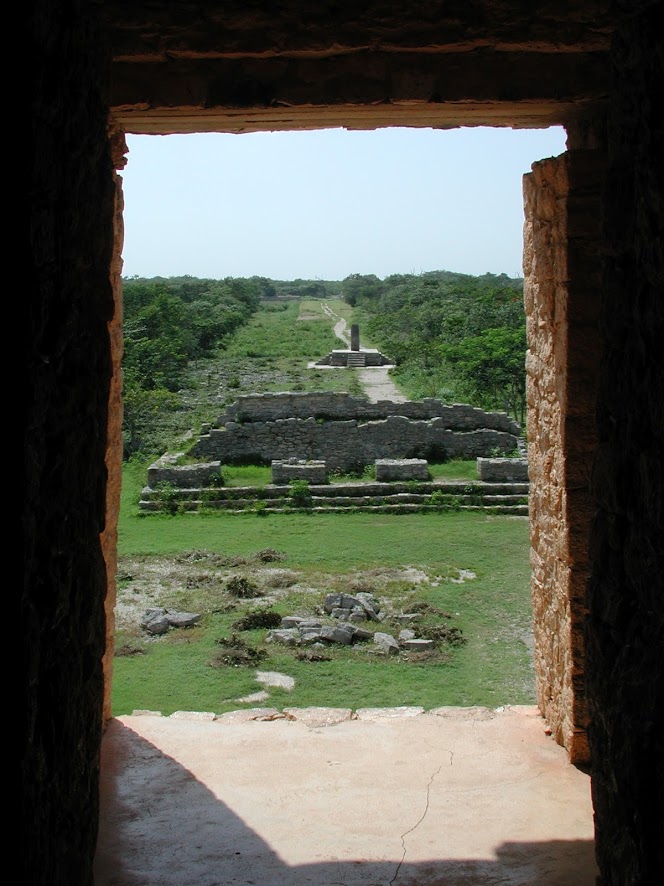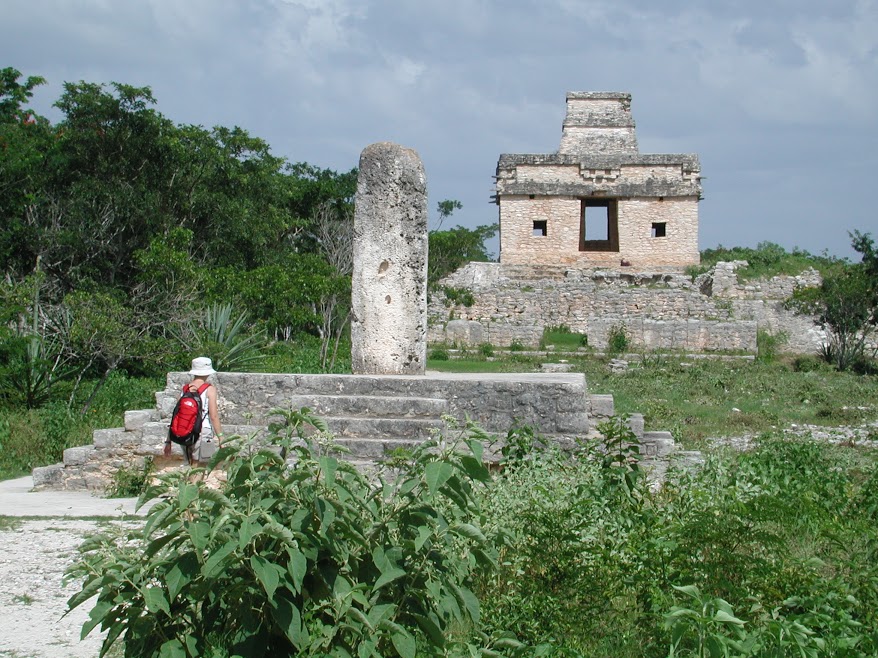Dzibilchaltún, Yucatán, México
11 September 2001About halfway between Mérida and Progresso lie the ruins of Dzibilchaltún, an important centre in the ancient world of the Maya. The name means ‘The place with writing on the stones.’

Dzibilchaltún covers an area of about 16 square kilometres, in which there are about 8400 structures. The central part of the site covers three square kilometres, which includes several temples and pyramids, as well as a cenote of unknown depth, one of the largest in the Yucatán. Many of the structures date back as far as 500 B.C.
From downtown Mérida, you can catch a colectivo that stops down the road from the temple. A 10 minute hike from there along a trail through the jungle gets you to the entrance to the site, where they charge 50 pesos per person ($7.50 CDN) to get in. The day we arrived, it was a scorching 40-something degrees, with 100% humidity, so the fact that the small museum on the site was air-conditionned was worth the price of admission in itself.
The site is divided into two parts, separated by a one kilometre long road. At one end is the Temple of the Seven Dolls, named after seven ceramic dolls found there as offerings to the gods. At the other end is a courtyard, a pyramid, a ball court and the cenote, as well as an open chapel that was constructed during the Colonial era, in the late 16th and early 17th century.

The Temple of the Seven Dolls is probably the most interesting part of the site. At least it was to us. At one time, the temple was adorned with plaster friezes, molded to the shapes of intertwined serpents, hieroglyphs, and masks, though these friezes are no longer on the structure itself. The building is thought to have served as an astronomical observatory, and during the Vernal and Autumnal Equinoxes, an interesting phenonmenon can be seen at sunrise. During the Equinoxes, the sun is perfectly aligned such that the morning sunlight passes directly between two sets of opposing doors on the temple, casting the light down into the courtyard facing the structure. Many people pile into Dzibilchaltún between 5:00 and 6:00 in the morning to witness the sunrise, then run back out and pile into a bus to Chichen Itza to watch the more spectacular effect of the sun casting light in the shape of a giant serpent slithering up the side of the temple there in the afternoon. If you don’t happen to be a teacher who has classes on these days, this is apparently the thing to do.
The cenote on the other side of the site is open for swimming, if you don’t mind thousands of little fish chasing you around the whole time. What’s curious, of course, is that there are any fish at all in the cenotes, since they’re fed by a series of deep, underwater channels of water that snake beneath the entire peninsula. There are no rivers or streams connecting them on the surface, so the fish have to descend to incredible depths (over 100 m) to move between one cenote and the next. From what people have told us, the fish that live in the cenotes are blind, which is kind of cool.
We hiked back out to the road after a few hours of wandering around, the sat waiting for a colectivo to drive by and pick us up. For 30 minutes we sat around, the air totally still and boiling hot, with only the sound of the mosquitos and the cow in the field next to us. I’m not entirely sure what was wrong with it, but the way it hollered made it sound demented and insane. I honestly hope I never drink any milk from that one; no way that’s safe.